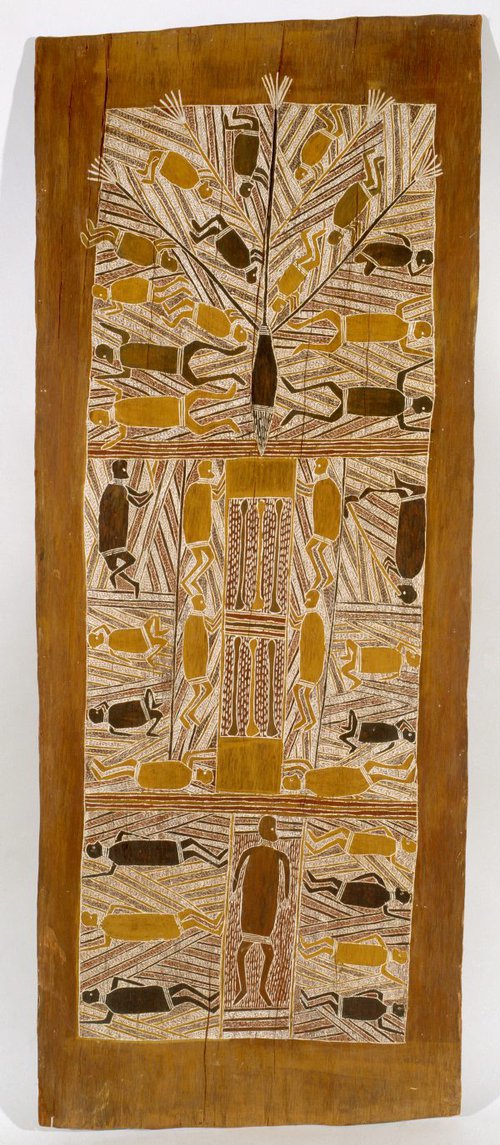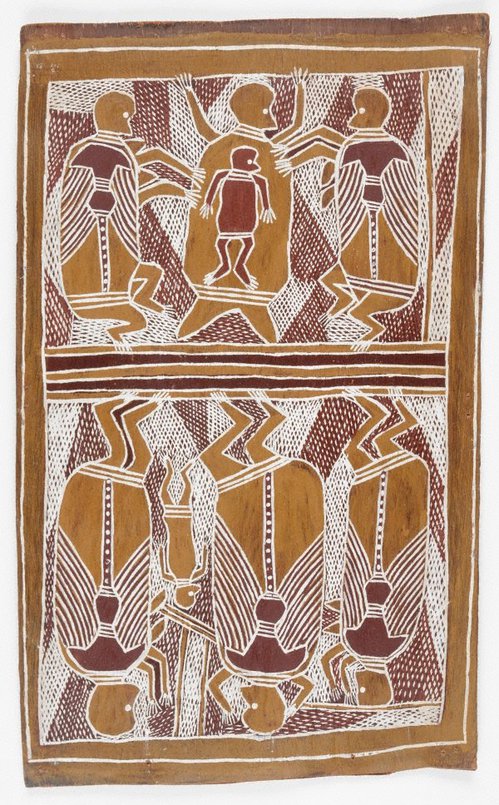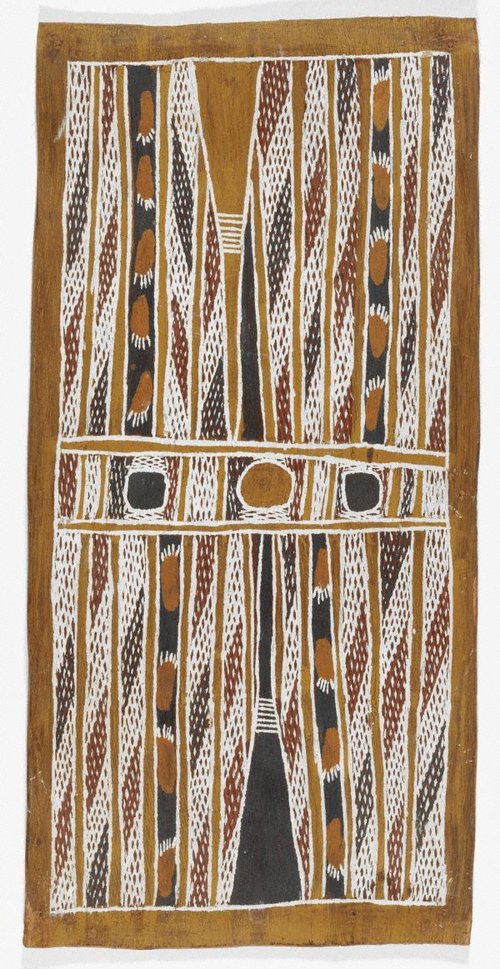Mawalan Marika
Australia
Born: Yirrkala, North-east Arnhem Land, Northern Territory, Australia circa 1908
Died: 26 Nov 1967
Language group: Rirratjingu, Arnhem region
Biography
The Djang’kawu, a man and two sisters, are the primary ancestral creator beings for the Dhuwa moiety of central and north eastern Arnhem Land. Yalangbara, where the Djang’kawu landed after their canoe journey from Burralku (an island to the east), is the most important location painted by Mawalan Marika. The Marika family consider themselves to be Mayarr Mayarr – the children of the Djang’kawu. In a series of five large bark paintings, Marika depicted the Djang’kawu journey by canoe across the sea, and their activities after they landed at Yalangbara. These paintings are considered to be the most comprehensive visual narratives of the Rirratjingu ancestral song cycle in existence.
Djang’kawu creation story, 1959, portrays the verses from the song cycle that tell of the Djang’kawu Sisters travelling to different locations and giving birth to the Dhuwa clans. The lower panel refers to the Sisters giving birth at Arnhem Bay and later at Milingimbi, above. Marika also includes eight mawalan (sacred digging sticks) that the Djang’kawu plunged into the ground, creating water-holes, sacred trees and food-bearing plants. To the right of this, the Djang’kawu watch a sunrise and sunset. The top panel shows the death of the Sisters at Galiwin’ku (Elcho Island), while Djang’kawu the man is shown at Yalangbara contemplating the mawalan and singing.
The two carved, wooden Djang’kawu, ancestral being[s] of the Dhuwa moiety, 1960, are painted with ceremonial body designs and decorated with human hair, feathered pendants and bark aprons. Marika’s figures are rare, three-dimensional representations of these miraculous ancestors.
Marika was a great law man with extensive sacred knowledge. He led key parts of the Djang’kawu and Wawilak ceremonies, which are the basis for most of his paintings. Marika also painted other subjects, including depictions of Murruruma, a Rirratjingu songman and cultural hero, and hunting scenes. He occasionally painted Macassan subjects, recalling the trepang fishing fleets that worked around the north coast of Australia until they were banned in 1907. Marika was one of the first artists at Yirrkala to begin painting barks for sale, and was also one of the first leaders and artists from Arnhem Land to visit the southern Australian cities. Marika strongly protested against the activities of mining companies in his country, through letters written by his son, Wandjuk Marika, to the Federal Government in Canberra. Mawalan Marika will be remembered as a passionate advocate for his people’s cultural and land rights.
Ken Watson in 'Tradition today: Indigenous art in Australia’, Art Gallery of New South Wales, Sydney, 2014








